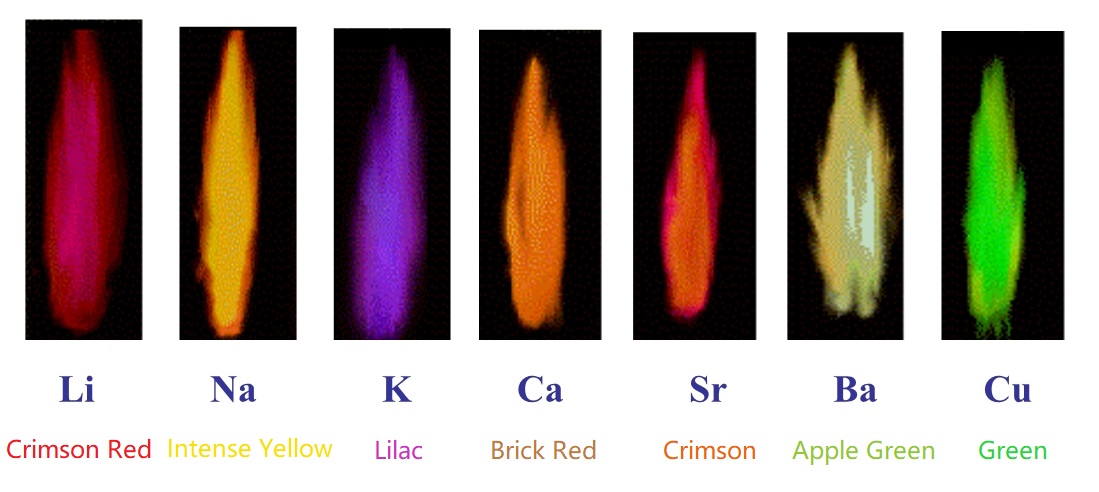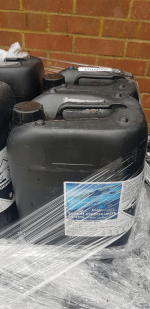It seems like we have been able to identify the problem to a reasonable degree of certainty.I guess I was hoping for a "I've seen that before and its ............"
Blue substance in our pool
- Thread starter Burnhard
- Start date
You are using an out of date browser. It may not display this or other websites correctly.
You should upgrade or use an alternative browser.
You should upgrade or use an alternative browser.
Most of us are homeowners with only a single pool to care for. Since we strongly discourage the introduction of metals in to pool water it's generally not something we would deal with. That doesn't mean those who have answered aren't well versed in water chemistry and able to diagnose issues.I guess I was hoping for a "I've seen that before and its ............"
However...
I used to do pool maintenance and when I started managing one client's pool I encountered something almost identical. It was indeed caused by copper and calcium. In her case the copper was from a pH crash and the acidic water ate through her copper heat exchanger. That's why she hired me to manage her pool. Her calcium was also extremely high, though manageable. When I vacuumed the pool the filter grids were covered in very similar blue gunk. So I can confirm what is being said is accurate.
Also, we have seen many cases of copper stains/problems posted on this site, so we are quite familiar with what it looks like.
Hi DonldsonMost of us are homeowners with only a single pool to care for. Since we strongly discourage the introduction of metals in to pool water it's generally not something we would deal with. That doesn't mean those who have answered aren't well versed in water chemistry and able to diagnose issues.
However...
I used to do pool maintenance and when I started managing one client's pool I encountered something almost identical. It was indeed caused by copper and calcium. In her case the copper was from a pH crash and the acidic water ate through her copper heat exchanger. That's why she hired me to manage her pool. Her calcium was also extremely high, though manageable. When I vacuumed the pool the filter grids were covered in very similar blue gunk. So I can confirm what is being said is accurate.
I was not being disrespectful, your combined knowledge makes me look like a complete amateur, I am very happy to take in all your advice and knowledge and learn from it, I have been very frustrated by this and have been on a number of forums without success and have been at my wits end.
I will be getting the water tested for copper residue as soon as my Pool engineer comes back in.
Thanks for all of your support it has been a great help to me.
Kind regards
Burn
Hi JamesI suspect that the calcium hypochlorite is probably causing the copper to precipitate out in small batches with the insoluble compounds in the calcium hypochlorite.
It's probably going to happen for a while until the copper level goes down.
I would switch away from calcium hypochlorite and go to sodium hypochlorite.
I would stop using the dry acid and switch to muriatic acid.
Just so you know here is our new Sodium Hypochlorite just arrived. Switching to this in the next week or so.
Waiting on new tank.
Attachments
I'm sure the other people on here much smarter than me are on the right track with the copper... but is there any way it could be from your liner? Did you say it's some kind of pvc fabric liner? Try taking a rag and rubbing it hard against your liner under the water line, and see if it comes up blue.Yes it is blue
If there is any sort of blue paint, that can cause blue color.
Almost definitely, we know that some to all of the color is copper because we can confirm that copper was added.
Almost definitely, we know that some to all of the color is copper because we can confirm that copper was added.
- May 23, 2015
- 24,399
- Pool Size
- 16000
- Surface
- Plaster
- Chlorine
- Salt Water Generator
- SWG Type
- Pentair Intellichlor IC-60
Does the blue substance only come from the filter bags on your robot cleaners? Can you observe the backwash effluent to see if the sand filters are picking up any of this substance? Can you open the sand filters and inspect the state of the media inside?
geh
Gold Supporter
- Nov 28, 2020
- 253
- Pool Size
- 15600
- Surface
- Plaster
- Chlorine
- Salt Water Generator
- SWG Type
- CircuPool RJ-45 Plus
It would be interesting to know the residual left behind in the pipe and equipment too.
mguzzy
Gold Supporter
@JoyfulNoise .. does copper in this form show up in a flame test? I am having flashbacks to College Chem
Probably. Metals change the flame color.does copper in this form show up in a flame test? I am having flashbacks to College Chem
Copper should impart a green color.
Even a tiny bit of metal can change the flame color.
For example, if you have a humidifier that vaporizes the water without boiling it, there will be enough metals in the air to change the flame color in the same room as the humidifier.
People with gas stoves can sometimes see the flame color go from blue to orange or red, which is usually a sign of incomplete combustion and carbon monoxide, but the problem is actually metals in the air from the humidifier.
Last edited:
Maybe put a lot of the substance in distilled water to dissolve it and then strain it through a coffee filter and then vaporize the water in a fine mist near a flame to see if the flame color indicates the presence of copper.
There will probably be colors for copper, sodium, calcium and a few others.
Or, you can probably just try some directly in a flame.
There will probably be colors for copper, sodium, calcium and a few others.
Or, you can probably just try some directly in a flame.
mguzzy
Gold Supporter
That is what I recall... but if the make up of the residue dust is also Ca then that may interfere with the test.. What kind of school is this? Do they have a chemistry lab? Maybe it could be used as a real world science project! 


I think that as long as there is some green in the color, that's a good indication of copper.
After dissolving the substance in distilled water and filtering it, you can boil off some of the water to increase the concentration of metal ions before creating a mist near the flame.
To create a fine mist, you can use an ultrasonic humidifier or maybe a spray bottle if the mist is fine enough.
If the solution is concentrated enough, you might be able to use the same method shown in the video with the wire loop.
To create a fine mist, you can use an ultrasonic humidifier or maybe a spray bottle if the mist is fine enough.
If the solution is concentrated enough, you might be able to use the same method shown in the video with the wire loop.
- May 23, 2015
- 24,399
- Pool Size
- 16000
- Surface
- Plaster
- Chlorine
- Salt Water Generator
- SWG Type
- Pentair Intellichlor IC-60
Ok, even I’m starting to think you guys are crazy ...
We're borderline crazy.
Unfortunately, we're on the wrong side of the border.
Unfortunately, we're on the wrong side of the border.
Thread Status
Hello , This thread has been inactive for over 60 days. New postings here are unlikely to be seen or responded to by other members. For better visibility, consider Starting A New Thread.


